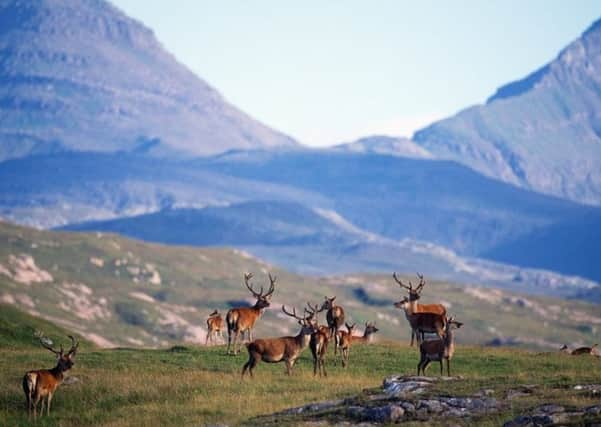Travel review: A bothy retreat in the Inner Hebrides


Staying in a bothy is one of those experiences that it’s fun to read about when you’re tucked up on a winter’s night pondering distant summer days but harder to get around to actually doing. My son Bertie and I were determined to turn our dreams into reality regardless of the logistics, journey and discomfort. We were not disappointed.
Bothies are best described as stone tents. Typically, they’re former shepherd’s cottages, accessible only on foot and completely off-grid. You can’t book and there’s no charge. Bothying is old fashioned travel with a frisson of adventure into the unknown.
Advertisement
Hide AdAdvertisement
Hide AdWe were staying on the Isle of Rum in the Inner Hebrides, initially for three nights in the bunkhouse. Our last night’s expedition began at Kinloch Castle which was built as a base for hunting deer and entertaining at the end of the 19th century by George Bullough who had inherited his father’s fortune from a textile machinery business in Lancashire.
The main materials used were red sandstone and a metal frame which proved far from ideal in the unforgiving Highland climate. Predictably, the pile is now crumbling and rusting, its contents preserved in a time capsule of eccentric Edwardian indulgence.
Kinloch was bequeathed by Bullough’s widow along with the rest of the island to Scottish Natural Heritage in 1957. Today it’s a liability more than a legacy; a white elephant in a nature reserve.
We began by cycling two miles along tracks originally laid for deer stalking access and later upgraded by Bullough’s son for racing cars. We then dumped the bikes and set off into the wilds in a patchy drizzle. The four-mile walk along a glen was an unrelenting damp plod. Every footstep squelched and the only other sound was the occasional cuckoo. Eventually, we reached the coast and then continued along it for a few hundred yards and over a rise before spotting journey’s end.
Advertisement
Hide AdAdvertisement
Hide AdBelow us and at the foot of the towering Bloodstone Hill was Guirdhil bothy. We approached timidly. Was anyone going to be there? A rope securing the latch suggested not and so it proved much to our relief. No-one turned up later either. The little house by the sea was ours for the night.
We entered the main room sensing that someone had just left, which they would’ve done that morning as we’d bumped into the latest occupants earlier. Stag antlers and bloodstones from the beach were arranged on the two downstairs window ledges. There was a long table built into the wall with signs including directions up Bloodstone and to cross two rivers as well instructions about using the trowel (there are no toilets) and a poem inspired by the place. The sleeping accommodation was a bare mezzanine platform.
The smell of smoke was the first thing we’d noticed. Bertie soon got a fire going, which impressed me, and our walking boots and trouser zip-offs were soon drying out nicely. The fire was our television. For bothy virgins we settled in pretty well. We had supper of sandwiches (we weren’t ready to cook on this trip) and then ventured out to the pebbly beach.
Bertie suddenly spotted feral goats in the far corner. Not just one or two but a flock of around 20 with horns like scimitars. Having only just got over that excitement we discovered the entrance to a very narrow and long cave. We edged along and peered into its depths with the torches on our phones. (Not much use for them out there other than that).
Advertisement
Hide AdAdvertisement
Hide AdTo cap our Famous Five adventure – or make that Famous Two – we watched spellbound from a few yards away as a stag and doe passed the bothy to graze in the ruined blackhouses next door. Amidst such a supremely peaceful scene the woes of the world seem to belong to another planet. You don’t get much more away from it all than this. We wanted the moment to last forever.
The show closed with a tardy red sunset over the island of Canna. How snug we felt in our sleeping bags as the wind whistled and rain hammered down.
The conditions had improved by morning. Overnight we’d unwittingly had our last brush with wildlife: rodents had eaten our biscuits. We scrubbed our teeth in the plunge pool of the nearby waterfall and, with a ferry to catch, soon made haste. Sadly, cloud concealed the summit of Bloodstone Hill so we abandoned plans to scale it. Over a col and into a bowl the sun came out, the walking improved and we were soon back at the community hall.
We had been spectacularly lucky. We had the bothy to ourselves, the evening was dry and the wildlife came out to play all of which combined to turn one of my longest held travel ambitions into an unforgettable experience. On Rum an Englishman’s home is his castle and for us it was a bothy on the other side of the island.